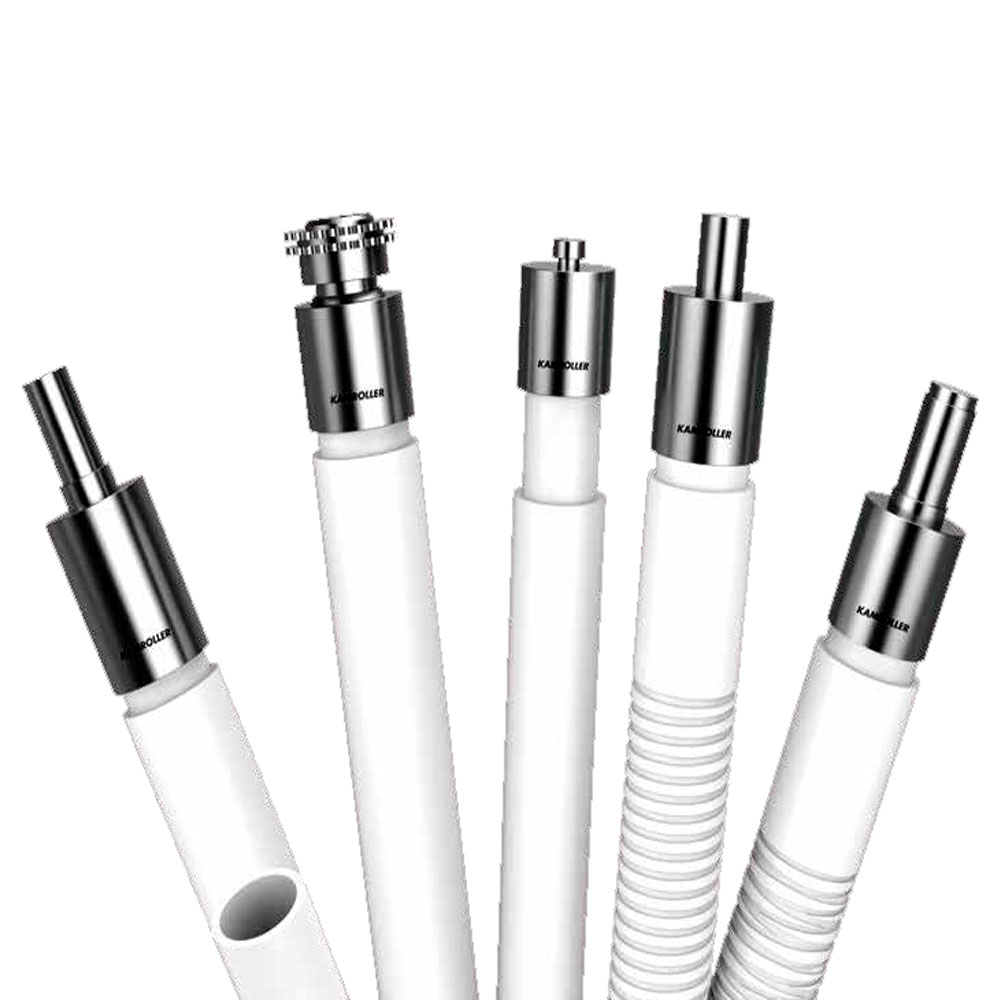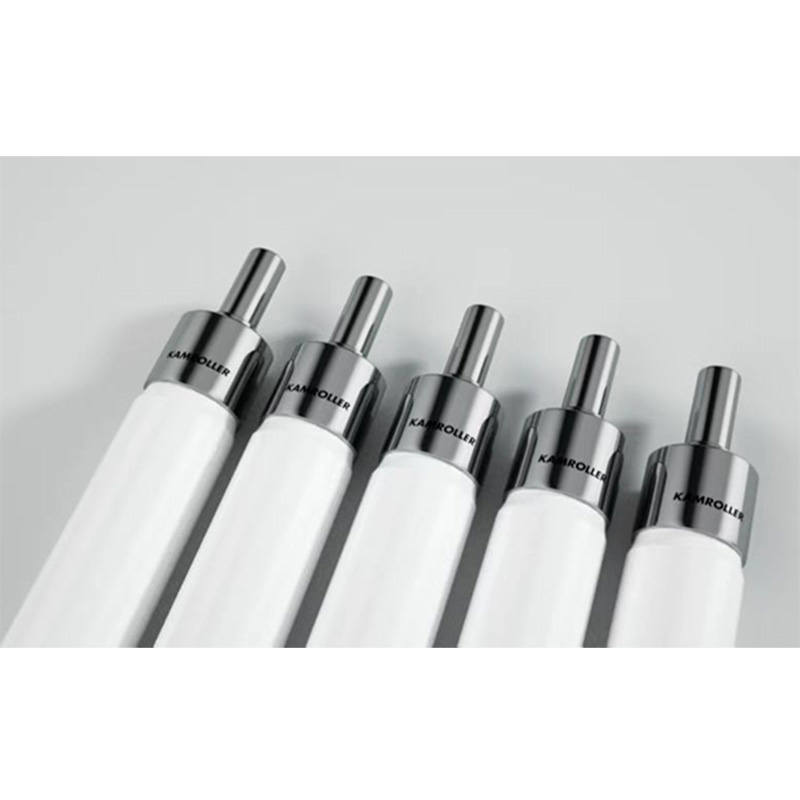Fused Spherical Silica Applications & Benefits
2024.07.02admin

Fused Spherical Silica: The Powerhouse Particle for Precision Separations
In analytical chemistry, it has become a never-ending process to solve the problem of separation of mixture with high accuracy. A small but powerful player steps up here: coated with fused spherical silica. These are nearly perfect spheres made from high-purity silica and are changing how things are done.
What is Fused Spherical Silica?
Fused spherical silica is a substance that is meticulously made of high-purity silicon dioxide (SiO2) particles. In a high-temperature fusion process, these particles are formed into perfect spheres while ordinary silica gel has an irregular shape. It uncovers certain characteristics that adapt them for separation processes only if they are handled in a certain manner.
Key Properties of Fused Spherical Silica
As for the complex area of analytical chemistry, it is hard to overestimate the contribution of fused silica. These highly polished, spherical particles that are made of high-purity silica are the backbone of SPE and HPLC methods. Nevertheless, what features make them so vital? Let’s examine the salient features that propel fused spherical silica to the forefront of the separation race
- Champions of Surface Area:
Picture a world that has the size of a bacterium and ideal real estate. These Fused spherical silica particles have a very high surface area due to their spherical shape with a smooth surface. Greater efficiency is achieved when your sample has more ‘space’ to interact with the stationary phase of the column which is the fused silica particles. This is a scientific victory, surely: better isolation and increased engagement.
- Porosity Powerhouse:
Actually, fused spherical silica is more than just a solid sphere consisting of a network of microscopic roads called pores. Thus, the sample’s components can move through these pores and interact with the stationary phase. Each cell goes through an effective separation due to the high porosity of the fused spherical silica.
- Chemical Idleness:
It is a type of glass that is manufactured from very high-purity of quartz and it is chemically very stable. This helps to minimize the variability of the particles and thus the separation whereby the particles and your valuable sample components do not interact in a way that should not be expected. This is not the case here; there are no side effects; everything is as black and white as it can be.
It can endure the force that is exerted in chromatography. They are mechanically quite sturdy because they can withstand a lot of pressure without spilling even a single drop of the fluid under analysis. What this means is that your separations will continue to work optimally for as long as they are needed.
Applications of Fused Spherical Silica
Fused silica is not merely another name for a newcomer in the family of separation sciences, it is a breakthrough. These are fragile and very smooth spheres of silica which are commonly employed in numerous analytical techniques. Let’s examine the main domains of application for fused spherical silica:
- HPLC Hero:
It is the highest-class material in the field of High-Performance Liquid Chromatography (HPLC). Due to their uniformity in size, large surface area, and controlled porosity they are suitable for the separation of complex mixtures. Fused spherical silica media inside the HPLC columns allows the scientists to separate and identify various components of the samples, be they pharmaceuticals or environmental samples.
- SPE Champion:
Therefore, the strength of this silica is a good thing for the SPE (Solid Phase Extraction). These microscopic spheres capture the target analytes from a sample matrix when the latter is filled into cartridges. Consider them as small tools that ‘pull out’ the specific fragments you want. This purification and concentration is done with the help of fused spherical silica and after this, your sample is ready for further analysis with HPLC.

Choosing Your Fused Spherical Silica Manufacturer: Most Suitable One
Fused spherical silica media however may look like small beads on the outside, it is imperative that you get the right ones for your chromatography tests to be as effective as they should be. The following are the main things to think about when selecting your fused spherical silica media:
- Size of Particles:
The Balancing Act Particle size is the main factor that affects the time and resolution of the analysis. It is also possible to achieve better resolution with smaller particles, typically 2-5 µm in size which helps in discriminating between two components that are likely to elute closely. They may, therefore, also cause low flow rates in the system. Higher flow rates may be realized with a larger particle size particularly 10+ µm but at the cost of resolution. The trick is to find out what is best for you and your needs. It can be said that it is a rather reasonable balance between the two factors when choosing the right equipment for an analytical climb.
- Pore Size:
Selecting the Appropriate Road: Just think of your sample parts moving through the fused spherical silica particles as through a network of small roads. The size of molecules that can get to this interior surface area is defined by the pore size of the media. To have an effective interaction with larger macromolecules, the pore size should be greater than 300 Å. The two mentioned types of pores, small ones with a size of about one hundred angstroms, may be suitable for small molecules. The pore size of the media is a critical consideration because your target analytes will easily be separated if you choose the right pore size.
- Surface Chemistry:
Customizing the Exchange: This is because one is able to chemically alter the fused spherical silica media through the introduction of various functional groups on the surface of the material through the attachment of hydrocarbon or amine among others. These modifications, for example, putting of specific labels on the side of the road can enhance the sensitivity to specific classes of the analytes. For example, the silica which has been modified with amines, can selectively and chemically interact with acidic functional groups of the molecules in your sample. Thus, you can select the surface chemistry of the stationary phase to fit your particular analytes when designing your separation.
Performance: Improving the Efficiencies of Fused Spherical Silica: A Review
The most popular materials for separation are fused silica media; however, even these champions require attention to be in tip-top shape. The following are some essential procedures to guarantee continuously dependable separations and maximize the utilization of fused spherical silica:
- Storage Tips:
Therefore, one should ensure proper care of the fused spherical silica media. To minimize on moisture absorption, it is recommended that they be stored in a cold and dry area. It is recommended to store them in a closed container with a desiccant because humidity may influence the efficiency of their separation. Consider it as the same as keeping your running shoes dry, and cold so that they do not become wet and thus affect your performance.
- Taking Care:
Remember that they are smooth and round spheres that are intricately carved, not some pebbles you can find on the beach! The movement of media or packing columns should be done with a lot of care. Do not press too hard as this may damage the particles and always use the right tools. Think about the fact that you would be very gentle with a scientific instrument that is easily damaged.
- Examine the Application:
Chromatography techniques are not the same when it comes to the requirements. Some of the factors that could be critical to HPLC include pressure limits and the compatibility of the mobile phase. Selectivity of the media to your target analytes plays a very important role in SPE. As you choose your fused spherical silica media, it will help if you know the specific application so that you can place the selection criteria in order.
Future of Fused Spherical Silica
Thus, fused silica has revolutionized the science of separation, but the story does not finish here. There are a ton of intriguing possibilities for this adaptable material in the future:
- Engineered Surfaces for Increased Selectivity:
More work is being done to develop fused spherical silica with special surface properties according to specific needs. It is easy to think of these particles as little magnets that are always attracted to certain things. Scientists also want to create media with an even more enhanced selectivity for certain types of analytes by attaching functional groups that will result to better and more efficient separation in complex mixtures.
- Biocompatible Fused Spherical Silica:
New possibilities for development are offered by the creation of spherical silica, which is biocompatible. These specific media can be used in biochromatography for the isolation and separation of biomolecules including nucleic acids and proteins. This can prove to be beneficial for future research in areas such as bioanalytics and drug development.
Conclusion:
Our goal is to provide high-quality, carefully manufactured fused spherical silica media with high efficiency, high resolution, and longer useful service. Get in touch with KAMROLLER today to discuss your individual needs and find out how our spherical silica media could deliver the results you need to make the most of your separations.
Read more: Glass Annealing Roller – A Detailed Guide


